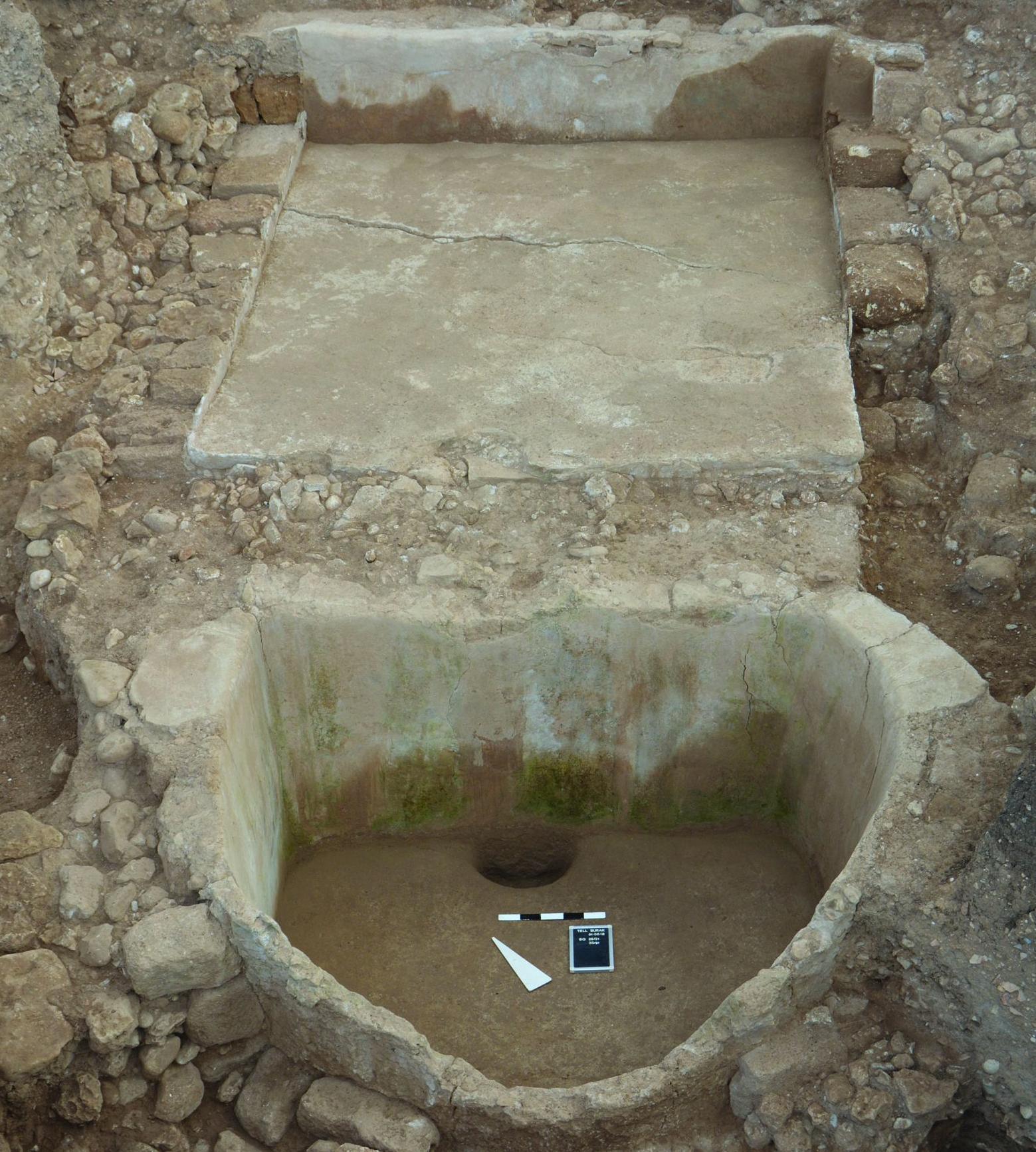Press Releases Archive
14.09.2020
Iron Age wine press yields clues to Phoenician building techniques
University of Tübingen archaeologists discover rare evidence of early winemaking at Tell el-Burak in Lebanon
Wine had great importance in the Iron Age Mediterranean. In particular, the Phoenicians – the inhabitants of the central coastal Levant – were considered to have played an important role in the spread and popularity of wine. However, no installation for winemaking was known in their homeland. Now, the first Iron Age wine press in present-day Lebanon has been discovered during excavations at the Phoenician site of Tell el-Burak. Dr. Adriano Orsingher and Professor Jens Kamlah from the Institute of Biblical Archaeology, and Dr. Silvia Amicone and Dr. Christoph Berthold from the Competence Center Archaeometry - Baden-Württemberg (CCA-BW) at the University of Tübingen, together with Professor Hélène Sader from the American University in Beirut, investigated the construction of the 7th century BCE wine press and the building materials used in it. They found that when the Phoenicians built the wine press, they used a plaster mixed from lime and fragments of crushed ceramics. Later, in Roman times, this technique for making a lime-based plaster was further developed. The study has been published in the latest issue of the journal Antiquity.
Since 2001, the site of Tell el-Burak has been excavated by by a joint Lebanese-German mission. The Tell el-Burak Archaeological Project has uncovered the remains of a small Phoenician settlement, inhabited from the late eighth to the middle of the fourth century BCE. It is likely that the settlement was founded by the nearby town of Sidon to supply it with agricultural products. Tell el-Burak was bordered to the southwest and southeast by a 2.5-meter-wide terrace wall. “South of one of these walls we discovered a well-preserved wine press. It had been built on the slope of the hill,” the authors report.
Hardwearing, water-resistant material
Analyses carried out at the Tübingen CCA-BW within the framework of the ResourceCultures collaborative research center (1070) have now provided new data on the composition and technology of the Iron Age plaster of which the wine press was made. “A good-quality lime plaster could be difficult to produce,” say the authors, “The Phoenicians refined the process by using recycled ceramic shards. This made it possible to build better and at the same time more stable buildings.” A local and innovative tradition of lime plaster had developed in southern Phoenicia, they add, “The finished plaster was water-resistant and hardwearing. The Romans adopted this technique for making their buildings.” An ongoing organic residue analysis at the University of Tübingen may determine whether all three plastered structures at Tell el-Burak were connected to wine production.
Earlier research in Tell el-Burak showed that grapes were cultivated on a large scale in the area surrounding the village. “We assume that wine was produced there on a large scale for several centuries. For the Phoenicians it was very important – they also used wine in religious ceremonies,” say the authors. The earlier discovery of a large number of amphorae – often used to transport liquids and other foodstuffs – indicates that the Phoenicians also traded their wine. “The city of Sidon was on sea trade routes in the eastern Mediterranean. Phoenicians played an important role in the spread of wine in the Mediterranean area, and their tradition of wine consumption was passed on to Europe and North Africa.” So far there has been little evidence of wine production in Phoenicia, the authors said. “This new discovery provides many clues as to how the pioneers of wine produced the drink.”
Publication:
Adriano Orsingher, Silvia Amicone, Jens Kamlah, Hélène Sader & Christoph Berthold: Phoenician lime for Phoenician wine: Iron Age plaster from a wine press at Tell el-Burak, Lebanon. Antiquity 2020 Vol. 94 (377): 1–21, https://doi.org/10.15184/aqy.2020.4
Excavation project:
Tell el-Burak Archaeological Project. Joint project of the American University of Beirut, Professor Dr. Hélène Sader; the University of Tübingen represented by the Collaborative Research Center 1070, Professor Dr. Jens Kamlah; the University of Mainz, Dr. Aaron Schmitt and the Oriental Department of the German Archaeological Institute, Dr. Margarete van Ess.
Contact:
University of Tübingen
Faculty of Protestant Theology
Institute of Biblical Archaeology
Dr. Adriano Orsingher
Phone +49 7071 29-78025
adriano.orsingherspam prevention@uni-tuebingen.de
Professor Dr. Jens Kamlah
Phone +49 7071 29-72879
jens.kamlahspam prevention@uni-tuebingen.de
American University of Beirut
Department of History and Archaeology
Prof. Dr. Hélène Sader
Phone 00961-1-350000/extension 4183
hsaderspam prevention@aub.edu.lb
Competence Center Archaeometry - Baden-Württemberg
Faculty of Science
Applied Mineralogy
Dr. Christoph Berthold
Phone +49 7071 29-76801
christoph.bertholdspam prevention@uni-tuebingen.de
Dr. Silvia Amicone
Phone +49 7071 29-76801
silvia.amiconespam prevention@uni-tuebingen.de
Contact for press:
Eberhard Karls Universität Tübingen
Public Relations Department
Dr. Karl Guido Rijkhoek
Director
Janna Eberhardt
Research Reporter
Phone +49 7071 29-76753
Fax +49 7071 29-5566
janna.eberhardtspam prevention@uni-tuebingen.de
www.uni-tuebingen.de/en/university/news-and-publications

